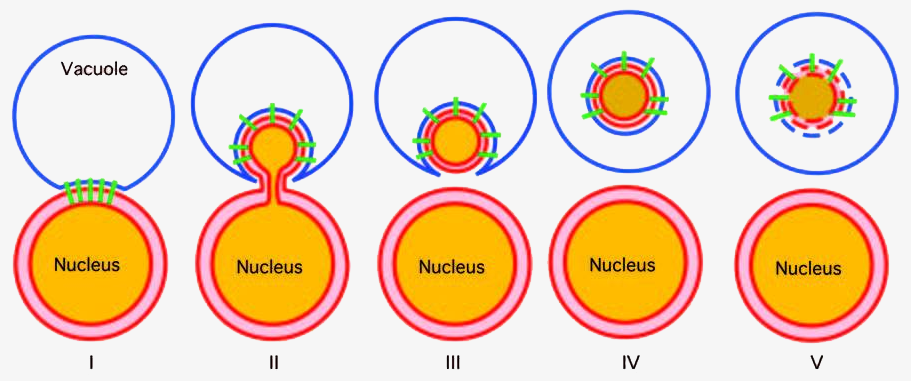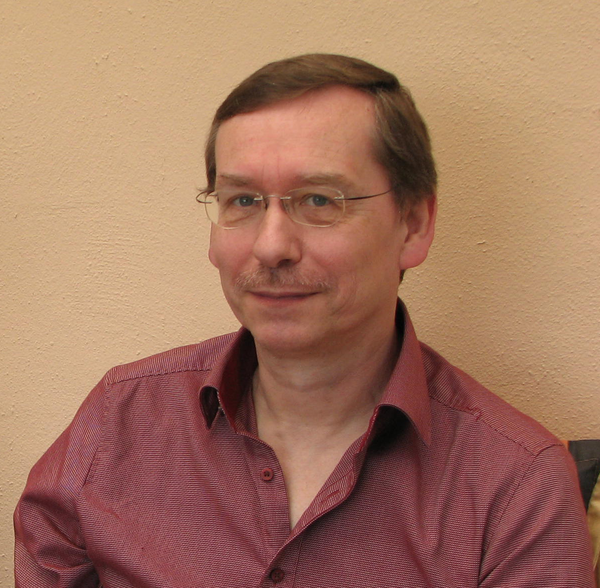
Taken from: Krick, R., Mühe, Y., Prick, T., Bredschneider, M., Bremer, S., Wenzel, D., Eskelinen E.-L. and Thumm, M. (2009). Piecemeal microautophagy of the nucleus: genetic and morphological traits. Autophagy, 5(2), 270-272.
About
Organellar contacts mediate synthesis and transport of lipids and are important for cellular homeostasis. Autophagy exists in two modes: macroautophagy, where the cargo is engulfed in the cytosol by a double membraned isolation membrane (phagophore). The second is microautophagy, where the cargo is engulfed by vacuolar arms and after their closure taken up into the vacuole. Both modes use the same machinery. In S. cerevisiae Nvj1 within the nuclear ER forms a contact (nuclear vacuolar junction, NVJ) with vacuolar Vac8. Upon nitrogen limitation NVJs are removed by micronucleophagy (piecemeal microautophagy of the nucleus, PMN). In this project, we want to characterize the individual molecular events during micronucleophagy. We further want to identify and understand the molecular function of the required components.






